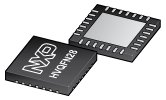- No Longer Manufactured
- P89LPC932A1FHN
8-bit microcontroller with accelerated two-clock 80C51 core 8 kB 3 V byte-erasable flash with 512-byte data EEPROM
- This page contains information on a product that is no longer manufactured (discontinued). Specifications and information herein are available for historical reference only.
The P89LPC932A1 is a single-chip microcontroller, available in low cost packages, based on a high performance processor architecture that executes instructions in two to four clocks, six times the rate of standard 80C51 devices. Many system-level functions have been incorporated into the P89LPC932A1 in order to reduce component count, board space, and system cost.
Product Details
Part numbers include: P89LPC932A1FHN.
Documentation
Quick reference to our documentation types.
1-5 of 10 documents
-
Application Note
Philips LPC900 microcontrollers single cell power supply
-
Application Note
AN10367
-
Application Note
AN10338
